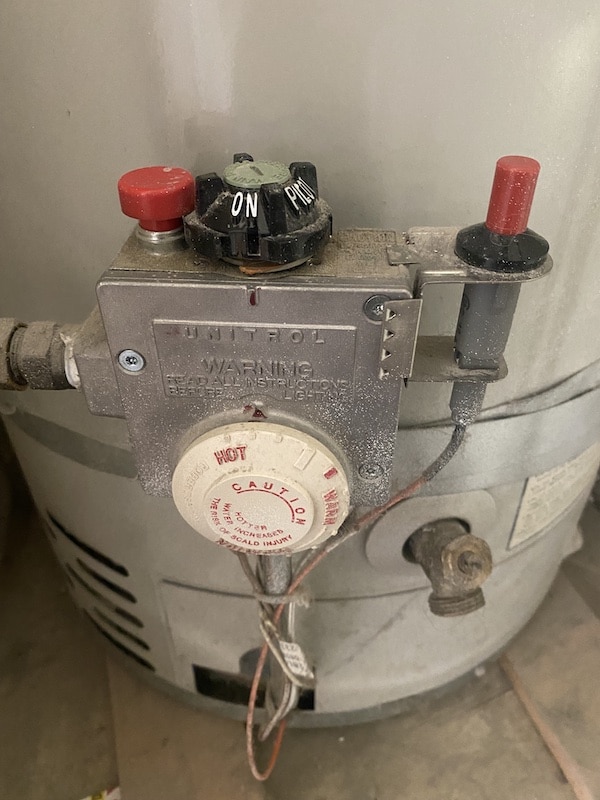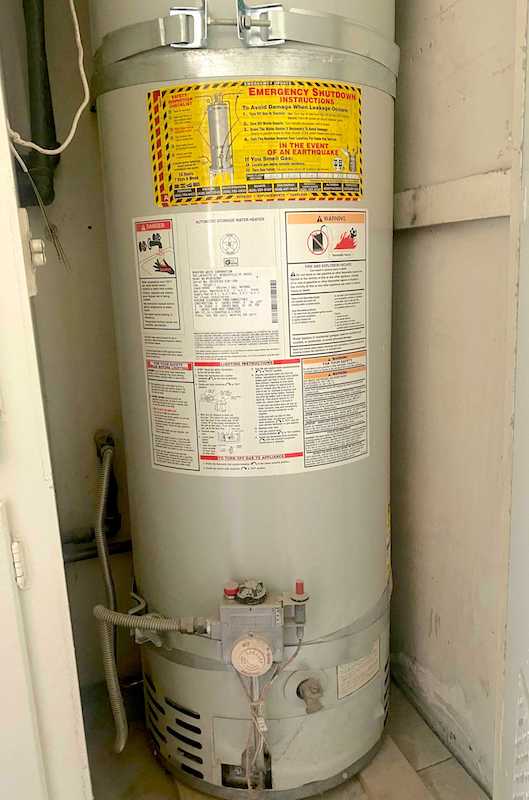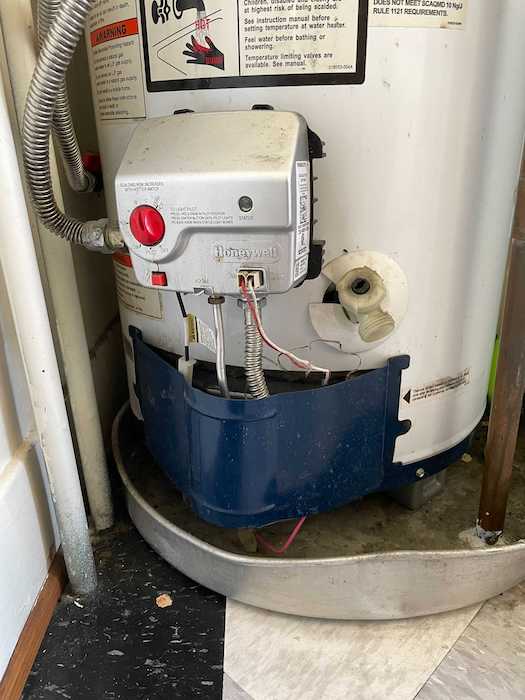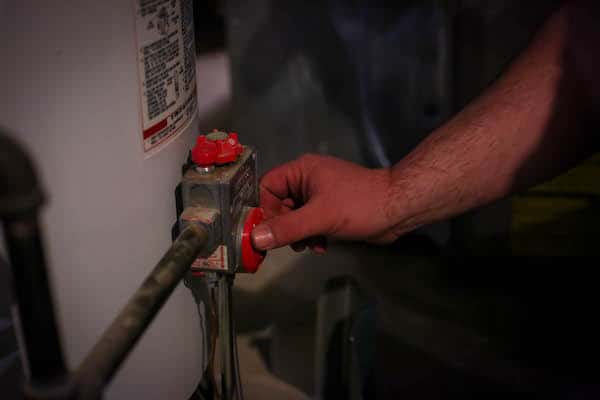
Need to light or relight a water heater pilot light? The US Department of Energy notes the importance of knowing how to safely relight your pilot light before turning your water heater off. You’ll need:
- A flashlight
- A lighter
- To identify if your unit is standard or tankless
- To identify if your unit is powered by gas or electricity
- A manufacturer manual or online instructions for your brand when available
When the shower you depend on to wake you up in the morning or soothe you at the end of the day never gets warm, it can set you down the wrong path for the remainder of the day. That is just one reason it is a good idea to know how to troubleshoot problems with your water heater, starting with the water heater pilot light.
How to Check Pilot Light on Water Heater
The pilot light is typically located at the base of most standard hot water heaters. For some units, removing an access panel may be necessary. How can you tell your pilot light is out? There are several ways to know if a problem exists with your hot water heater pilot light. Some common red flags to check for include:
- No hot water – one of the first and easiest indicators of the reason your shower was cold
- No flame – A flame may only be obvious with other lights shut off first. If you don’t see it, it’s probably out.
- A color change or an error message on the gas control valve indicator
Warning – Follow These Steps At Your Own Risk
Put Pilot Light Safety First: Interacting with electricity, gas and an open flame always carries with it a risk of serious injury. For that reason, it is highly recommended to call a licensed professional for matters dealing with water heater outages.
In addition, should you ever detect a strong smell of natural gas, do not attempt to light the pilot. You should exit the property and contact your local gas company or call 911.
Instructions for Lighting Pilot Light on a Water Heater

Once you have established that the water heater pilot light went out, you must relight it.
The process common to many models, but subject to the specific manufacturer instructions for your system, follows these general steps:
- Set the temperature gauge to the lowest degree possible.
- Turn the gas valve off (This is typically on the bottom front of the water heater).
- Wait 5 minutes for any gas to clear. (If you smell gas, stop and call a professional).
- Remove the access cover.
- Use a flashlight to find the pilot or burner. You will know it when you see two gas tubes running from the gas control valve to the burner. The larger tube goes to the burner, the smaller to the pilot.
- Turn the control knob to “Pilot,” and light a long match or lighter.
- Gas Pilot Light: Press and hold the reset button down and simultaneously touch the flame to the pilot light gas tube until a flame appears there as well. Continue to press the button for about 60 seconds to ensure the thermocouple is properly heated and the pilot light will stay lit.
- How to Light a Water Heater with Electronic Pilot: There will be a red or black button marked “Ignition,” press it for about 60 seconds. You will hear the clicking sound of the igniter sparking.
- Release the reset button(s) slowly to make sure the pilot light stays lit, and then turn the control button to “On.” There will be a distinct “whoomp” as the main burner ignites. (Note: The flame should be bright blue.)
- Lastly, set the thermostat to the desired temperature.
Brand-Specific Instructions for How to Light Pilot on Water Heater
There should be a label on your water heater that will give you instructions on how to reignite the pilot light. However, if they are illegible, you can reference the user’s manual for troubleshooting pilot light water heater problems for your specific brand and unit using the following resources:
- AO Smith
- Bosch
- Bradford White (Standard and Tankless)
- GE
- Honeywell
Water Heater Pilot Light Keeps Going Out
So what happens when your water heater pilot light won’t stay lit? There are many reasons that your hot water heater pilot light keeps going out. The main reasons this happens include:
- A natural change in gas pressure
- A draft either because the area your water heater is stored is a drafty area or the door/cover shielding the pilot light doesn’t have the best seal
- A lack of combustible air – water heaters need air to properly do their job. Lack of air could lead to pilot light outages or even carbon monoxide buildup (Safety Tip: It’s a good idea to have a CO detector nearby).
- A bent or dirty thermocouple malfunctioning – If you have repeated pilot outages, this is likely your culprit.
- A dirty pilot light opening or pilot tube – If the flame is yellow or orange, it is burning dirt and other pollutants.
- A clogged or damaged flex tube means gas will not be supplied to the burner for combustion.
- An electrical issue
- A water flow problem – typically indicated by fluctuating water temp or water that doesn’t reach the temp at which the thermostat is set
- A water leak (tankless) – A leak means that hot water could pool, turn cold, and indicate to the system that it needs warming. This constant demand for hot water means you could experience a spike in the utility bill and water damage, depending how quickly you catch the problem.
Relight Pilot Light on Water Heater: Try These Steps

Now that you have an idea of why the pilot light goes out on the water heater, what can you do about it? Again, put safety first and trust unclear situations to a licensed professional, who may often try these steps below:
- If you have an electric water heater, check that it has power and that the GFCI outlet and/or that the circuit breaker has not tripped. If either trips again right away, there’s an electrical issue.
- If you have a standard water heater and get a bit of hot water before it goes cold again, one of the heating elements has gone bad and needs replacing. In this case, check the age of your water heater and call a plumber to help with the repair or a quote on a water heater replacement.
- If you have a tankless water heater, most have a screen that shows an error code to tell you the cause of the issue. It could be lime buildup from lack of annual flushing/maintenance, a water filter clog, or the electronic ignition could be dirty and malfunctioning.
- Make sure the gas valve is in the “On” position.
- If the thermocouple is bent, turn off the gas, move it over, and try relighting the pilot.
- If thermocouple is dirty, clean it by shutting off the water heater gas valve and the main gas line. Unscrew the nuts (3) holding the thermocouple and gas tubes to the valve. Slide the burner out and vacuum the burner ports. Clean the end of the thermocouple with microfiber cloth and steel wool.
- If the thermocouple still won’t operate properly, replace it.
Can’t Fix the Hot Water Heater Pilot Light? When to Call the Pros

There comes a point when you have done all the troubleshooting and DIY fixes you can, and it is time to call in experienced professionals. Once you do, they will clean the unit to ensure no dirt, debris, or mineral buildup is causing a water flow issue, check the water pressure, inspect your thermocouple, gas lines, and more to determine the best course of action to get your water heater back up and running.
It’s always a good move to call a licensed plumber for water heater services when you:
- Aren’t comfortable handling gas appliances
- Want a safety check or maintenance services
- Need to repair or replace the thermocouple
- Have a gas leak or a cracked or damaged gas burner
- Require a faulty gas valve repair or replacement
- Own a water heater 8-12 years old, as you might consider getting a quote on a new one.
FAQs When a Water Heater Pilot Light is Out
Not necessarily. The thermocouple should automatically shut off the gas supply, mitigating any danger. However, if you do smell gas, call a plumber and/or your gas company to inspect the issue.
This is a small copper wire the ends in a small metal probe at the end of the pilot light tube that acts as the flame sensor. When this is warm, it automatically shuts off the gas, thereby regulating the gas supply. If it doesn’t sense a flame and doesn’t shut off the gas, it could lead to a gas buildup or leak or even an explosion.
If the pilot will not relight at all or will not stay lit even after following the steps outlined above on this page, the thermocouple is likely bad or at least malfunctioning.
The water will continue to heat and cool in a standard water heater, while a tankless system will have no demand, therefore no heating done without the supply of water.
Yes, this will keep your thermocouple warm, your gas supply shut off, and eliminate condensation buildup in the unit among other issues.
The water will continue to heat and cool in a standard water heater, while a tankless system will have no demand, therefore no heating done without the supply of water.
30-40 minutes for a standard water heater and no wait at all for tankless water heaters as they heat water on demand.
Water heaters can be extremely complicated systems if you are not already familiar with them. Remember to always prioritize safety when dealing with gas and electrical lines.
The above steps listed to light or relight a pilot light vary with every system. For that reason, we always recommend that you follow the exact instructions available for your specific unit. Put safety first. When manufacturer instructions are not available, or you are unsure about the exact procedure, contact a licensed, professional plumber with regular experience servicing water heaters and pilot lights.


